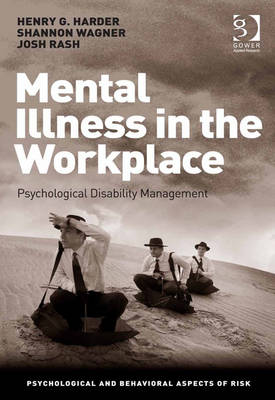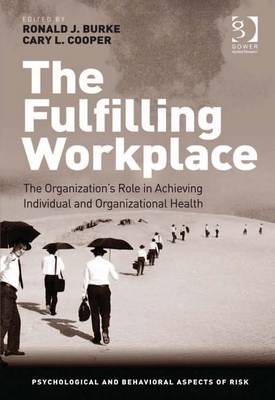Psychological and Behavioural Aspects of Risk
3 total works
Creating Healthy Workplaces
by Caroline Biron and Professor Ronald J. Burke
Mental Illness in the Workplace
by Henry G. Harder, Shannon Wagner, and Josh Rash
The extent of mental illness concerns in the workforce is becoming increasingly apparent. Stress, depression, anxiety, workplace bullying and other issues are costing businesses billions every year in lost productivity, poor treatments and employee retention. Unless appropriately addressed, issues related to mental illness difficulties will result in stiff financial, organizational, and human costs for organizations.
The authors of Mental Illness in the Workplace provide a practical guide to identifying, understanding, treating and preventing individual and organizational mental health issues. They illustrate how organizations can save money and improve the health and well-being of their employees by using a psychological disability management approach in the treatment and accommodation of mental illness issues. Drawing on empirical evidence from North America, the United Kingdom, Australia and New Zealand, the book is in three parts. The first addresses the scope of mental health issues in the workplace. The second part describes the most common mental illnesses found in the workplace, while the third focuses on prevention and treatment of mental health issues.
This book will meet the needs of human resources professionals, administrators of employee assistance programs, industrial and organizational psychologists, mental health practitioners, those teaching or studying psychology and disability management, and more generally will serve to enlighten students of business management and practicing managers regarding a major workforce risk factor.
The Fulfilling Workplace
It is very easy for organizations to ignore or overlook the impact of social and commercial change-of increased pressure to deliver profit (above all else) and of transformation in the ways in which we are now working-on the mental health and, consequently, the performance of their employees. And yet there is plenty of evidence that in many workplaces, performance is down, stress is up and professional employees are struggling to balance their home and work lives.
This collection, while looking at individuals, places the spotlight on organizational initiatives to support the development of attitudes, values, character and behaviors in employees. The aim of these initiatives is to increase our resilience to those experiences and events which impact on performance. There is a particular focus on managerial and professional jobs where employee discretion and commitment are critical.
The Fulfilling Workplace extends the themes developed in early titles in the Psychological and Behavioral Aspects of Risk Series deeper into organizations; to explore the organization's role in coming to grips both with human frailties and toxic workplaces-both destructive to individual and organizational health.


